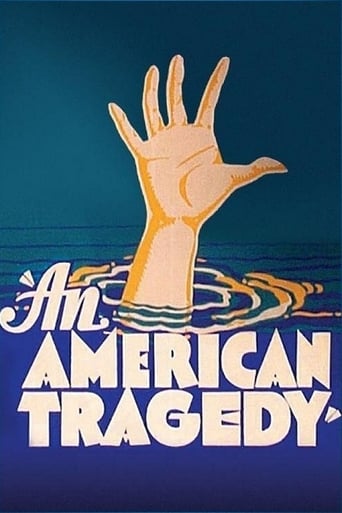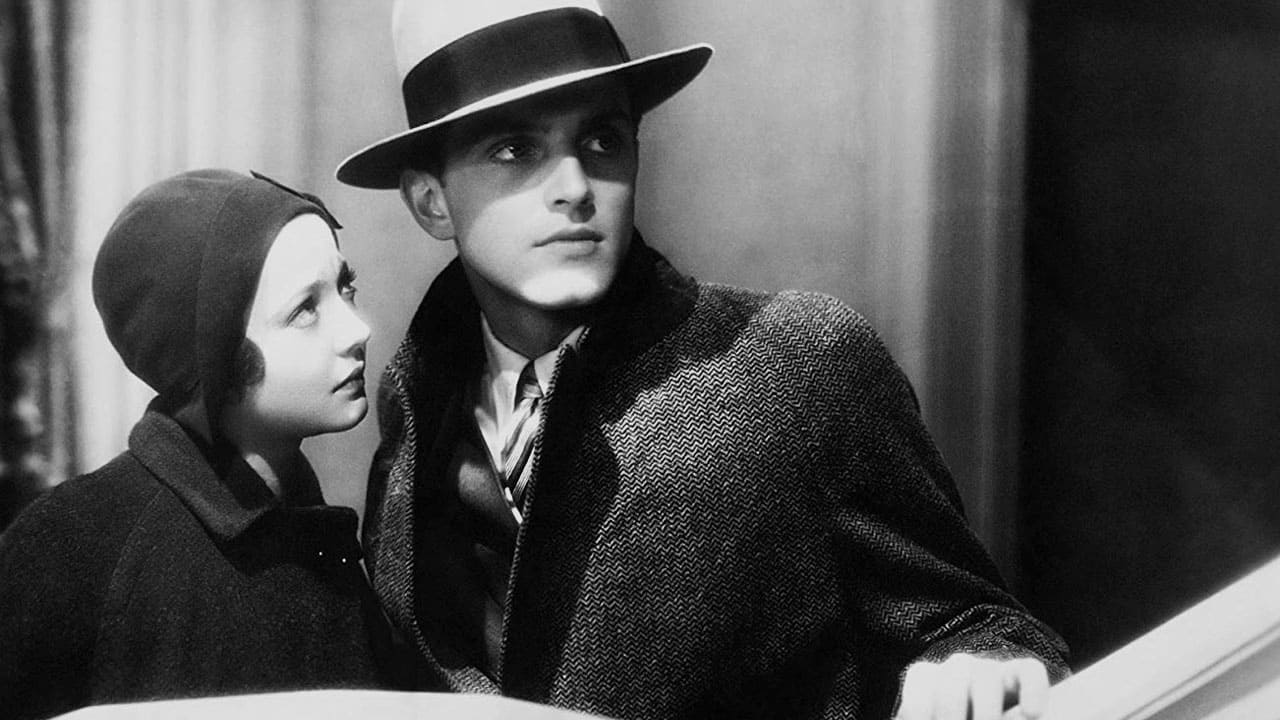rdoyle29
This first film adaptation of Theodore Dreiser's novel is an extremely troubled release ... first disowned by Dreiser, and then disowned by Josef von Sternberg when Dreiser successfully sued to have footage put back into the theatrical release. In a sense, it's a very faithful adaptation, following the plot of the book more closely than George Stevens's "A Place in the Sun". It still feels pretty truncated as the book's plot is jammed into an hour and a half. As a pre-code film, it's allowed to not skirt around the themes of abortion, murder and erotic obsession. It's one glaring fault is that Phillips Holmes seems completely unable to gain much audience sympathy and thus the movie's main character comes off as a completely amoral monster.
MARIO GAUCI
A classic American novel (by Theodore Dreiser) that was twice brought to the screen by master film-makers but, while both were reasonably well-received (the second – George Stevens' A PLACE IN THE SUN {1951} – being even allotted 'masterpiece' status in some quarters), they were also criticized for failing to bring out the essence of their source material! For the record, I had watched the latter version ages ago but will be following this one with it – so, a direct comparison will certainly prove interesting; incidentally, I own two copies of the rare 1931 film and, while I obviously watched the one with superior image quality (acquired only hours prior to the viewing!), I still had to contend with a muffled soundtrack that occasionally rendered the dialogue unintelligible.Anyway, Sternberg was deemed the wrong director for this subject matter and, to be honest, the plot does feel somewhat dreary here – though the climactic trial undeniably compels attention (with the film's "Pre-Code" vintage being identified via a discussion of the soon-to-be taboo subject of abortion!). Incidentally, I have just stumbled upon the script which the great Soviet film-maker Sergei M. Eisenstein supplied, since he had previously been entrusted with the project for his American debut – which would subsequently never come to pass! Again, it would be fascinating to evaluate the two versions side-by-side but I do not have the time to go through the latter right now; if anything, I would love to check out Sternberg's celebrated autobiography "Fun In A Chinese Laundry" (which I also recently got hold of) to go along with my current retrospective of his work! As was Sternberg's fashion, the visual aspect of the film rather eclipses narrative concerns. Though the contemporary setting here precludes his usual emphasis on ornate sets and expressive lighting, he still employed one of Hollywood's most renowned cameramen in Lee Garmes (especially noteworthy are the ripple effect throughout the opening credits and his trademark use of sustained dissolves during scene transitions). On his part, the latter managed to externalize the protagonist's conflicted feelings by way of the various milieux in which he moved: mission, factory, hotels, high-society circles, country-side, courtroom and, finally, prison.This was just as well because stiff leading man Phillips Holmes (who looks an awful lot like Andy Warhol "superstar" Joe Dallesandro!) seems overwhelmed by the complexities of the role, which rather compromises audience identification with his plight! Incidentally, the script's attempt to pass this off as a problem picture was bizarre, to say the least – that said, the whole moralistic angle (which I do not think is present in the 1951 adaptation) led to a predictably serene conclusion, in which the anti-hero accepts the meting out of justice as his only possible fate. Even so, Dreiser was dissatisfied with how the film turned out (apparently ignoring the potent sociological element, he objected to the script's focus on the murder investigation) and took Paramount to court!; though his arguments were ultimately overruled, the studio still ordered considerable re-shoots
and, ironically, it was now Sternberg's turn to express dismay and he even went so far as to disown the released version! One of the two women with whom the protagonist is involved is played by Sylvia Sidney (this was made the same year her brief major period – including films for Mamoulian, Vidor, Lang, Hitchcock and Wyler – kicked off): she is excellent, with some even suggesting the actress deserved an Oscar for it!; her death scene is very similar to the botched murder attempt, also occurring during a would-be innocent boat ride, in another classic by an equally gifted film-maker i.e. F.W. Murnau's SUNRISE: A SONG OF TWO HUMANS (1927). The other girl is Frances Dee – whose essentially small part, however, is obviously much reduced in comparison to that of Elizabeth Taylor's in the (lengthier) remake but also to Sidney's here; she is excluded, for plot purposes, from the latter stages of the film – but it must be said that the overall compactness of sequences vis-a'-vis the remake was not an artistic choice but merely the prevalent style of the era! Also on hand to fill in the roles of the two formidable lawyers in the case (incorporating an unprecedented re-enactment of the accident, complete with boat and passengers!) are District Attorney Irving Pichel and Defense Counsel Charles Middleton.
drednm
This seems much closer to the facts of Theodore Dreiser's great novel than the soapy 50s version, good in its own way, with Montgomery Clift.Even with florid Josef von Sternberg directing, the film follows the basic plot of the novel although there seem to be a few holes. Still, the courtroom scene is electric and makes this all worth it. I also like the casting of Phillips Holmes as Clyde. Holmes is able to capture the bizarre passions and inability to really care that embody Clyde. His subtle performance in the courtroom scenes, as he slowly breaks down and loses any sense of truth under the barrage of lawyers, is quite excellent. His voice goes higher and thinner as he becomes just a frightened boy answering the stupid questions posed by the sadistic and ambitious lawyers.Sylvia Sidney is quite good as the tragic Roberta, and Frances Dee captures the haughty attitudes of the wealthy of that era. Charles Middleton and Irving Pichel play the lawyers. And Lucille LaVerne plays Clyde's mother.This was a big hit in its day and helped establish Holmes and Sidney as stars. Holmes had a relatively short starring career and died in WW II but he made several memorable films with Nancy Carroll.
dbdumonteil
To think that it's the same actress who stole the show in the first version of the Dreiser novel,who shone in Lang,Hitchcock or Wyler works, and...landed in Tim Burton's "Mars attacks" where she played the "deus ex machina grandma who single-handedly saved our dear old planet! It's very interesting to compare her performance with that of the great Shelley Winters in Stevens's remake:they give diametrically opposite renditions:Winters' portrayal is that of a vulgar ,crude ,exasperating and even authoritarian woman,almost a shrew;Sidney's girl is exquisite with small eyes longing for happiness and love,a very delicate style of play.If you've seen the remake before,you will notice big differences:the first one is the part of the wealthy girl:whereas Elizabeth Taylor 's part was very important in "a place in the sun",here Frances Dee does her very short stint,hardly 10 minutes,then they talk about her as "Miss X ", the invisible woman,which prevents us from comparing her with her more famous successor.Philip Holmes was surpassed by Montgomery Clift who gave more intensity,more ambiguity and finally more credibility to a character who is primarily a coward :there's room at the top ,but he's bound to fall because perhaps of his education.From that point of view,"an American tragedy" is more detailed than "a place in the sun" :the hero's mother plays a prominent part and it's finally in his last scenes with her that Philip Holmes transcends a rather monotonous portrayal.The first accident which he was not responsible for is not included in Stevens' version.If Sidney is the main asset of the movie,its main flaw is the very long trial ,one third of the running time is given over to it,and the defendant's attorney's and the prosecuting attorney's histrionics are sometimes ponderous and seem to come straight from the silent movies .(Sternberg was an important director before and after 1929,the year of the talkies).It's interesting to notice that between 1930 and 1935,it's his only film which does not feature Marlene Dietrich.All in all, Stevens'"a place in the sun" is a better constructed movie,a better remake,which has become exceptional nowadays,but at least for Sidney, watch this one.Nb:both movies pass over in silence book one and don't feature the hotel,Hortense ,the pregnant sister ,and the terrible car accident which costs a little girl her life.


 AD
AD


